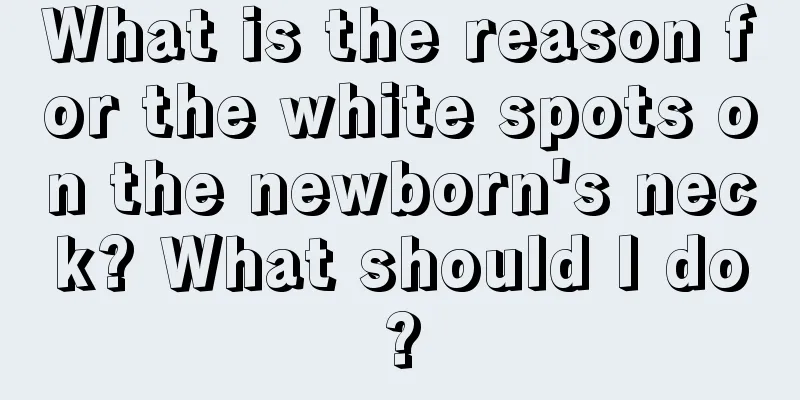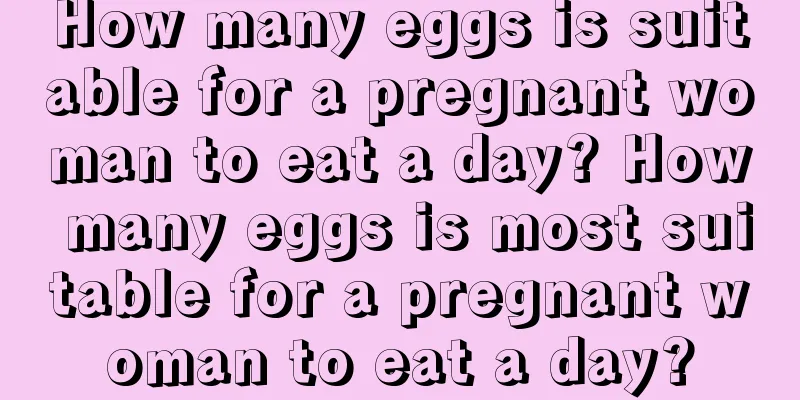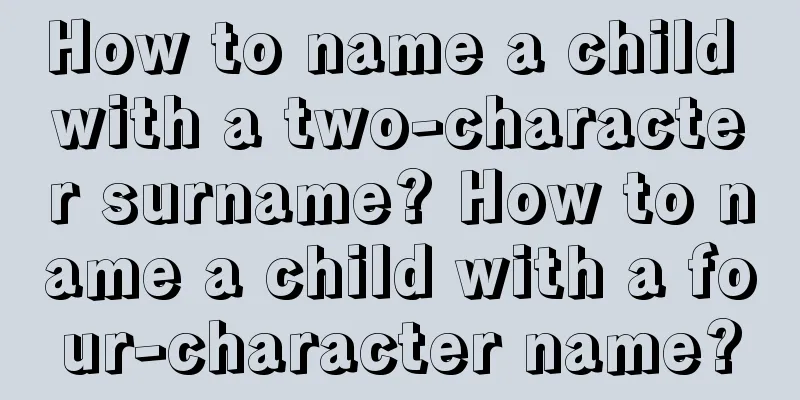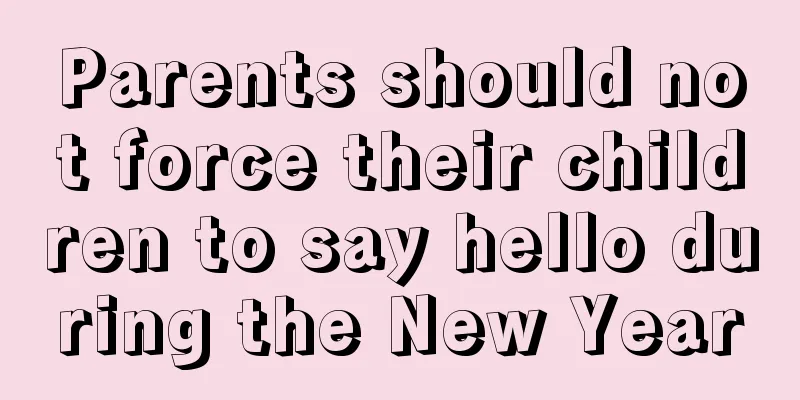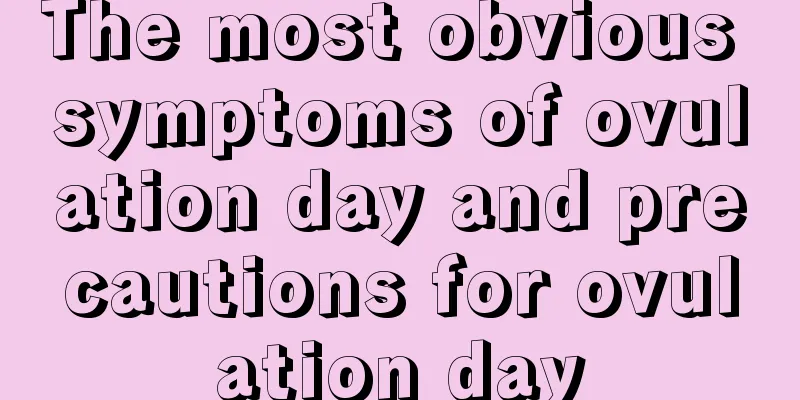How to start developing your baby's cognitive abilities
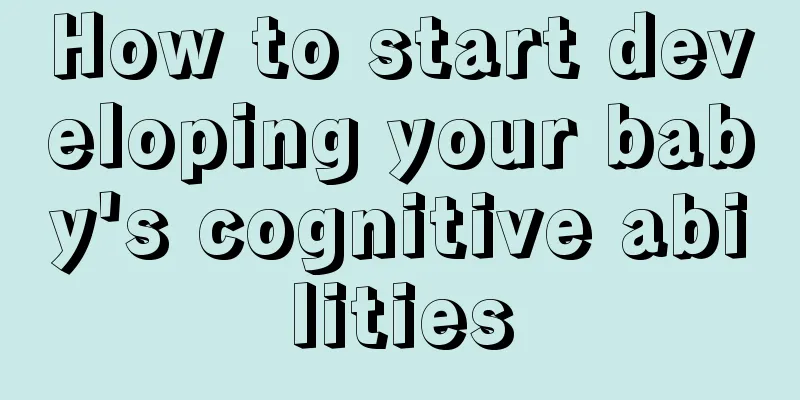
|
If you want your baby to achieve good results in the future, parents should pay attention to the cultivation of the baby's temperament and ability from an early age. So how to cultivate the baby's cognitive ability? What are the methods for training the baby's cognitive ability? What are the characteristics of the baby's cognitive ability? The following editor will introduce you in detail. Develop baby's cognitive abilityCan say more than 2 words: The vocabulary increases very quickly: by 18 months, he can say 10-15 words; by 24 months, he can say more than 50 words.Ask questions frequently: Ask questions such as "What is this?" and "What is that?" frequently. Introduce the names of things to your baby more often and answer questions seriously to improve your baby's language skills and adaptability. Answer seriously and sincerely, and never avoid or refuse to answer.Rich imagination: There are many questions and fantasies in the baby's world. For example, when hearing a dog barking, he thinks the dog has done something wrong and barks because he is afraid of being scolded. Tell your baby more interesting stories to better enhance his imagination.Possessiveness becomes stronger: refusing others to touch their things. Possessiveness becomes stronger, and when a baby of the same age touches their toys, they will cry, get angry, and hit the other person. They will also take other people's things as their own.Baby cognitive trainingVisual training: Place the baby in supine position, and hold a distance of 20-30cm above the baby's chest. Try to use red or black and white contrasting toys to attract the baby's attention. Use toys to train the baby's line of sight to move with objects up, down, left, and right, so as to stimulate the baby's visual development and further improve the flexibility and coordination of the eye movements.Auditory training: Parents can use the sounds of talking or toys in different directions around the baby to train the baby to turn his head to find the source of the sound. You can use music with different melodies, speeds, loudness, tunes, or different instruments or toys that make sounds. You can also choose the sound of knocking on different objects at home, such as the sound of knocking on bowls, clocks, etc. You can also change the tone of speaking to the baby to let the baby distinguish various sounds.Taste, smell, temperature and other perception training: Use daily life to develop the baby's various senses. For example, when eating, you can dip chopsticks in the juice for the baby to taste; when letting the baby eat an apple, you can let him smell the apple's fragrance first, and then taste the apple's flavor; when the baby is taking a bath, you can let him smell the soap's fragrance first; when feeding with a bottle, you can let the baby touch the temperature of the bottle first, etc., which are all conducive to the development of the baby's perception.Tactile training: The baby's cheeks, lips, eyebrow arches, fingers or toes are all relatively sensitive areas. Parents can use their hands or other objects to practice the baby's sense of touch. For example, smooth silk scarves, rough linen, soft feathers, cotton, towels or sponges of different thicknesses, and toys of various shapes can give the baby different tactile sensations, which is conducive to the development of the baby's tactile recognition ability.Baby's cognitive ability characteristics1 year oldBabies can recognize objects based on their external features and identify family members by their sounds. Can pick out a wooden block that is the same as the one in an adult's hand from a pile of wooden blocks of the same size and shape but different colors. 2 years oldCan distinguish common colors such as red, yellow, blue, and green; can identify up, down, front, and back, and grasp circles, squares, and triangles. Can distinguish various sounds relatively accurately. You can touch more objects with your hands and thus learn about their characteristics such as hotness or coldness, softness or hardness. Able to distinguish the size and distance of objects, and distinguish between day and night. The observations were quite random, with confusing order, repetitions, and many omissions. Usually they can only observe the rough outlines of things and see the surface phenomena of things. They are easily influenced by external stimuli and shift the focus of observation. They are greatly affected by emotions. Often you have to point your hands at the objects you want to observe. 3 years oldAt this stage, children like to ask about various things happening around them and are very concerned about the answers, so the answers should be simple and to the point. Telling him to do certain things - "because these things are good for you" or "you won't get hurt" will make more sense to him than a detailed explanation. At this point, the child's reasoning is still one-sided, and he cannot consider a problem from two aspects, nor can he solve problems that require him to consider multiple factors at the same time. He has a better sense of time and understands certain special times, such as weekends and birthdays, but even though he can tell you how old he is, he has no idea how long a year is. 4 years oldIt is understandable that a day can be divided into morning, afternoon and evening, and that a year has different seasons. Know the days of the week and count each day in hours and minutes. Understand the basic concepts of counting, letters, size relationships, and names of geometric shapes. Many of your child's questions will involve "cosmic" aspects, such as the origin of the world, death and dying, and the composition of the sun and sky. Adults should not make up answers, but seek help from children's books suitable for children to solve these problems. 5 years oldThey can have a preliminary understanding of the difference between the real world and the fictional world, and know the names of the 12 months of the year and the names of each day of the week. They can begin to understand clocks and have a clearer concept of time. They are also more independent-minded and will express some "opinions" on the behavior of adults and some phenomena around them. 6 years oldStart to understand the concepts of seasons and months, and have a better understanding of the festivals in each month. Can read clocks and has a clearer concept of time. Can understand the meaning of numbers and find out the mathematical patterns within objects or things based on comparison. Be able to mobilize various senses, use hands and brains to explore problems. |
<<: How to teach your baby to recognize things and colors
>>: Can I eat persimmons during breastfeeding? Can I eat persimmons during breastfeeding?
Recommend
What to do if pregnant women are anxious before giving birth
Pregnant women must maintain a good mentality bef...
Is it normal for a baby to breathe like a pig? What should I do if my baby breathes like a pig?
Newborns have an imperfect respiratory system soo...
How to distinguish the authenticity of super laundry detergent? The advantages of super laundry detergent
Soon after Super Power Laundry Detergent was laun...
Make good use of parental influence to grow with your children
Are there any rules for freedom? What is the role...
How old can a baby use Babyganics sunscreen? Can Babyganics sunscreen be used on newborns?
How old can a baby use Babyganics sunscreen? This...
How to judge milk powder indigestion? Do you need to change milk powder if you have indigestion?
There are many reasons for baby's indigestion...
Can Liushen Flower Dew be used for bathing? Can Liushen Flower Dew be used for washing hair?
I heard that putting some Liushen floral water in...
Can pears be eaten cooked? What are the effects and functions of eating cooked pears?
Pears are one of the most common fruits on the ma...
What should I do if I catch a cold while breastfeeding? Can I still breastfeed if I catch a cold?
Mothers are tired from taking care of their child...
How to use condoms correctly? What are the precautions?
Pregnancy is an important topic in a relationship...
Will the fetal heart rate be normal if the fetus is hypoxic? Will the fetus still hiccup if it is hypoxic?
Pregnant women always pay attention to the condit...
How many carnations should be given on Teacher's Day? What color carnations should be given on Teacher's Day?
How many carnations should be given on Teachers&#...
Will I have stomach pain in early pregnancy? Causes of stomach pain in early pregnancy
Pregnant women are a very special group. They sho...
Can a one-year-old baby eat sausage? Is it good for babies to eat sausage?
Sausage is a good thing, delicious and nutritious...
Can pregnant women eat pears? Healthy ways for pregnant women to eat pears
Pears are a very delicious fruit, but pregnant wo...

